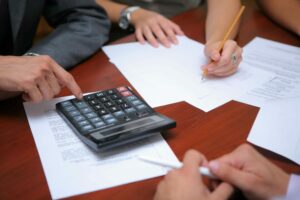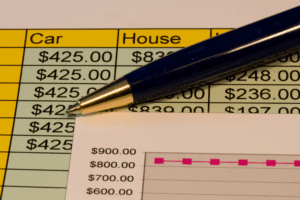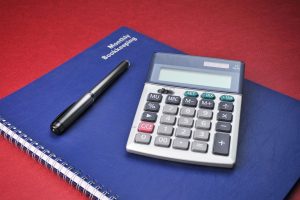
However, it is common for a balance sheet to take a few days or weeks to prepare after the reporting period has ended. A few examples of general ledger liability accounts include Accounts Payable, Short-term Loans Payable, Accrued Liabilities, Deferred Revenues, Bonds Payable, and many more. Liabilities and equity are listed on the right side or bottom half of a balance sheet. In most cases, lenders and investors will use this ratio to compare your company to another company. A lower debt to capital ratio usually means that a company is a safer investment, whereas a higher ratio means it’s a riskier bet. Although average debt ratios vary widely by industry, if you have a debt ratio of 40% or lower, you’re probably in the clear.

The long-term debt ratio
- This balance sheet compares the financial position of the company as of September 2020 to the financial position of the company from the year prior.
- The term can also refer to a legal obligation or an action you’re obligated to take.
- These contain things such as Treasury securities, bond investments, and stocks.
- In practice, the balance sheet offers insights into the current state of a company’s financial position at a predefined point in time, akin to a snapshot.
Annie is able to cover all of her liabilities comfortably—until we take her equipment assets out of the picture. Most of her assets are sunk in equipment, rather than quick-to-cash assets. With this in mind, she might aim to grow her easily liquidated assets by keeping more cash on hand in the business checking account.

Examples of Common Non-Current Liabilities
A bank statement is often used by parties outside of a company to gauge the company’s health. Public companies, on the other hand, are required to obtain external audits by public accountants, and must also ensure that their books are kept to a much higher standard. In this example, Apple’s total assets of $323.8 what are the three common liability accounts recorded on a balance sheet? billion is segregated towards the top of the report. This asset section is broken into current assets and non-current assets, and each of these categories is broken into more specific accounts. A brief review of Apple’s assets shows that their cash on hand decreased, yet their non-current assets increased.
Balance Sheets Secure Capital
Bonds payable are long-term debt securities issued by a corporation. Typically, bonds require the issuer to pay interest semi-annually (every six months) and the principal amount is to be repaid on the date that the bonds mature. It is common for bonds to mature (come due) years after the bonds were issued. Obligations of a company that extend for more than one year or the operating cycle of the business, are classified as long term liabilities.
- For this reason, a balance alone may not paint the full picture of a company’s financial health.
- The biological assets section is the most unique item in the balance sheet of WEF.
- The reason is that corporations will likely use the cash generated from its earnings to purchase productive assets, reduce debt, purchase shares of its common stock from existing stockholders, etc.
- In exchange for the preferential treatment of dividends, preferred shareholders usually will not share in the corporation’s increasing earnings and instead receive only their fixed dividend.
- A lower debt to capital ratio usually means that a company is a safer investment, whereas a higher ratio means it’s a riskier bet.
- Although balance sheets are important, they do have their limitations, and business owners must be aware of them.
What Are Balance Sheet Accounts Payable?
All revenues the company generates in excess of its expenses will go into the shareholder equity account. These revenues will be balanced on the assets side, appearing as cash, investments, inventory, or other assets. Knowing what goes into preparing these documents can also be insightful.

Regardless of the size of a company or industry in which it operates, there are many benefits of reading, analyzing, and understanding its balance sheet. Some liabilities are considered off the balance sheet, meaning they do not appear on the balance sheet. We’re firm believers in the Golden Rule, which is why editorial opinions are ours alone and have not been previously reviewed, approved, or endorsed by included advertisers. The Ascent, a Motley Fool service, does not cover all offers on the market.
Dividends payable, also known as accrued dividends, are dividend payments that the business has already declared but has not yet distributed to shareholders. Unfortunately, it isn’t uncommon for businesses to get overwhelmed by their debts. After all, https://www.bookstime.com/ knowing what they are is the first step to managing them well. This line item includes all of the company’s intangible fixed assets, which may or may not be identifiable. Identifiable intangible assets include patents, licenses, and secret formulas.
- The most common would be net 15 (within 15 days) or net 30 (within 30 days).
- This means it does not matter whether the liabilities are current or noncurrent.
- A balance sheet is also different from an income statement in several ways, most notably the time frame it covers and the items included.
- The auditor of the company then subjects balance sheets to an audit.
- Annie’s Pottery Palace, a large pottery studio, holds a lot of its current assets in the form of equipment—wheels and kilns for making pottery.
- Discontinued operations could reveal a new product line a company has staked its reputation on, which is failing to meet expectations and may cause large losses down the road.
The debt ratio

